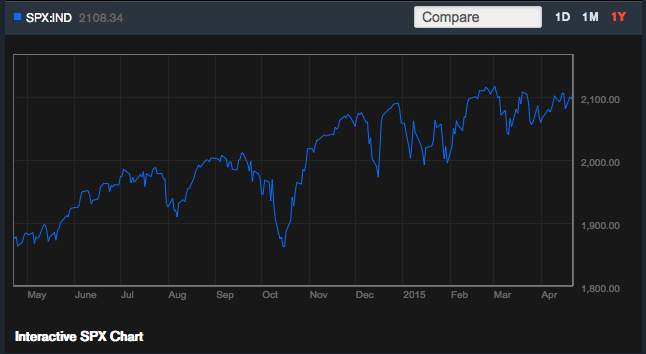Take a look at a graph of the S&P 500 Index this year and it kind of looks like a Six Flags roller coaster thrill ride.
Markets have been fairly choppy this year so far, as investors grapple with a rising dollar, declining corporate earnings and the perceived likelihood the US Federal Reserve will raise interest rates later in the year.
For many, now may be a good time to look at their portfolio and maybe even a rethink in strategy to maximize returns in an uncertain environment.

Two-Track Approach
Investors and financial experts often get into heated debates over the pros and cons of passive and active investing.
Yet there is a strategic way to enjoy the best of both worlds, usually called the core-satellite investing approach.

The Core
The basic idea: combine the advantages of index funds—lower cost, broader diversification, tax efficiency and lower volatility—with the nimbleness of actively managed funds with the potential for outperformance.
It’s a popular approach among financial advisers. In fact, two thirds of the financial advisors in the Financial TImes 400 list of money pros use some type of this approach.
So how does this work in practice?
The anchor of one’s core portfolio might be passive index funds that are broadly representative of the financial markets.
This could include exchange-traded funds that track U.S. small and large caps equities as well as the fixed income market.
Because indices change infrequently, transaction costs and capital gains tax are usually minimized.
These core components aim to deliver stability, since the portfolio will be fully diversified and mirror broad market trends.
The portfolio’s transaction costs and capital gains tax burden should also then be minimized, as indices don’t reshuffle their lineup as often as actively managed mutual funds.
Satellites
Then, there are the satellite strategies that have the potential to deliver market-beating returns but require more skilled active management.
Finding a hired hand to oversee your investments within such asset classes as international real estate investment trusts, commodities, high yield bonds and emerging markets may be an option.
Active managers, in some cases, may have a better shot of parlaying their expertise into superior returns in markets where there’s less instantaneous information and more arbitrage opportunities.
Active managers can usually move quickly to minimize potential losses when a particular company or sector suddenly hits the wall or falls out of favor with investors.
Takeaway
Fashioning an investment strategy with an inner core of long-term investments that track asset classes and an outer ring of shorter-term, specialist holds, can be a winning formula.
The core and satellite strategy can be an efficient way to bolt together a portfolio that has the potential to deliver higher returns with a reasonable level of risk and low transaction costs.
Photo Credit: NOAA Photo Library via Flickr Creative Commons




